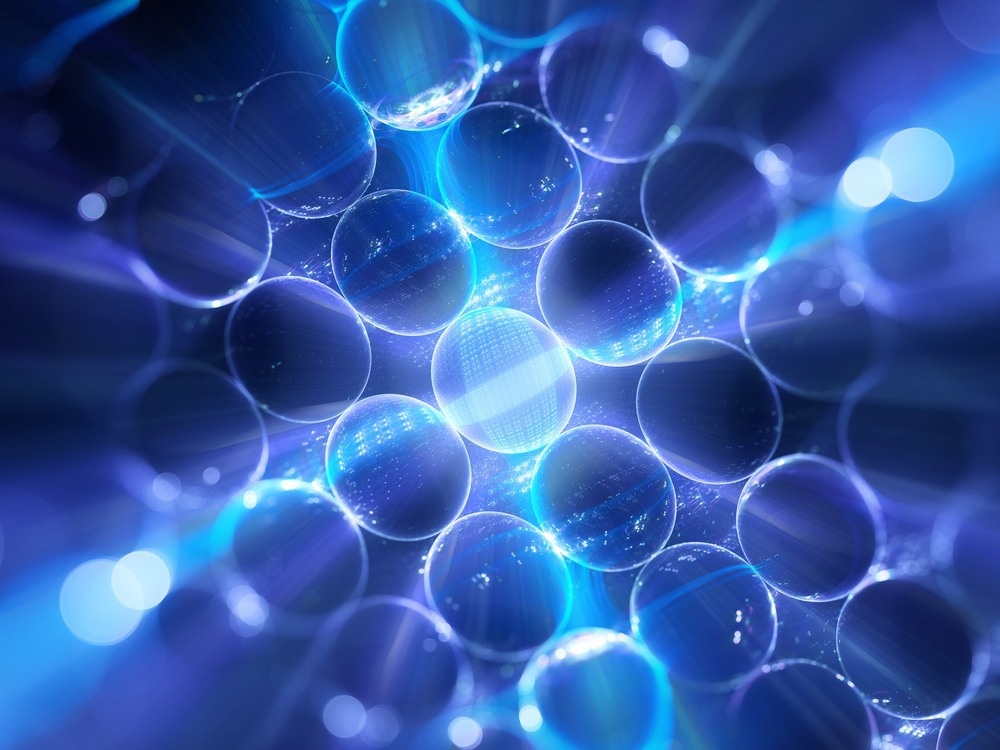Thin nanoscale-curved bubbles of graphene may develop on a flat surface due to trapped substances in the space between graphene and the substrate. The structure, shape, and internal pressure of the graphene bubble are all determined by the elastic energy necessary to deform the material.

Study: Light-Induced Raman Spectra Oscillations and Macroscopic Propulsion of Graphene Bubbles. Image Credit: sakkmesterke/Shutterstock.com
A recent study published in The Journal of Physical Chemistry C focuses on determining the geometric parameters of graphene bubbles by using Raman spectroscopy maps.
What are Graphene Bubbles?
Because of confined materials like water, hydrocarbons, and other gaseous molecules, graphene bubbles can develop on flat substrates due to their low permeability, unmatched mechanical properties, and outstanding flexibility.
Many inherent physical characteristics of graphene, such as Young's modulus, rigidity, and the adhesive energy between graphene and different substrates, may be evaluated by analyzing the geometric features of the graphene bubbles.
Since graphene is just one (or a few) atoms thick, it is susceptible to mechanical distortion, providing an appealing chance to manipulate graphene's physical characteristics. As a result, the graphene bubble can be considered an excellent graphene deformation engineering platform.
Important Applications of Graphene Bubbles
The graphene bubbles are greatly responsive to outside influences such as electromagnetic and optical forces. Previous research has demonstrated that the shape of the graphene bubbles can be changed by introducing an external electric force, indicating that graphene-based adaptable lenses have significant promise for future applications.
Because of the peculiar optical features of graphene bubbles, considerable light-matter interaction occurs, resulting in an optical bi-stability phenomenon at the resonance condition. The graphene bubbles can also be used to investigate the chemical and physical characteristics of encapsulated materials under nanoscale settings.
Raman Spectroscopy for Studying Graphene Bubbles
Raman spectroscopy is a flexible method for researching the characteristics of graphene, not only in determining the number of graphene sheets, stacking, bending, doping, and imperfections, but also in examining strain propagation.
Many studies have been conducted to investigate the effect of uniaxial stress on the Raman spectrum of graphene. The graphene bubble, on the other hand, is especially employed to analyze the Raman spectrum under biaxial stress, showing good consistency with theoretical results. In graphene bubbles, Raman amplification and Raman spectra variations produced by light interference have also been reported.
Despite the fact that graphene bubbles offer a wide range of fascinating features and prospective uses, there have been few investigations on monolayer graphene. More significantly, there have been relatively few experimental efforts on altering the motion of the bubble and its characterization by utilizing cutting-edge technologies like Raman spectroscopy.
Highlights of the Current Study
The current study produces a few-layered graphene bubble by heating separated graphene on a silicon dioxide/silicon platform. Optical imaging, atomic force microscopy (AFM), and Raman spectrometry are used to describe and investigate the bubble's characteristics,
Optical imaging and Raman mapping revealed significant interfering Newton rings on the interface of the bubble.
Accordingly, noticeable fluctuations in the graphene bubble's peak frequencies are visible in the line scans of the Raman spectrum. The possible mechanisms of Raman oscillations are also explored by measuring the temperature distributions of the laser-irradiated bubble.
Key Developments
Using a heating procedure during exfoliation, the researchers in this study produced graphene bubbles with controllable size and form. Raman spectroscopy enabled the comprehension of the strain parameters of the bubble. In both optical pictures and Raman mapping of the bubbles, light interference-induced Newton rings could be seen.
In optical imaging, the Newton rings are detected owing to white light's productive and detrimental interaction effects. Still, in Raman maps, these rings result from stationary waves created inside the bubble.
Based on Raman imaging, the temporal temperature profile in the bubble was scanned to directly view the stationary optical waves. Upon laser irradiation, it was discovered that the greatest local temperature inside a graphene bubble might exceed 1000 K.
The non-uniform heating effect caused by laser absorption led to the bubble's direct light-driven propulsion across a significant distance. By controlling the trajectory of the laser beam, it is possible to control the movement of the bubble in a reversible manner, demonstrating enormous promise for several fascinating applications such as reactive on-demand medication delivery systems.
Reference
Xiao, Y. et al. (2022). Light-Induced Raman Spectra Oscillations and Macroscopic Propulsion of Graphene Bubbles. The Journal of Physical Chemistry C. Available at: https://pubs.acs.org/doi/10.1021/acs.jpcc.2c03640
Disclaimer: The views expressed here are those of the author expressed in their private capacity and do not necessarily represent the views of AZoM.com Limited T/A AZoNetwork the owner and operator of this website. This disclaimer forms part of the Terms and conditions of use of this website.